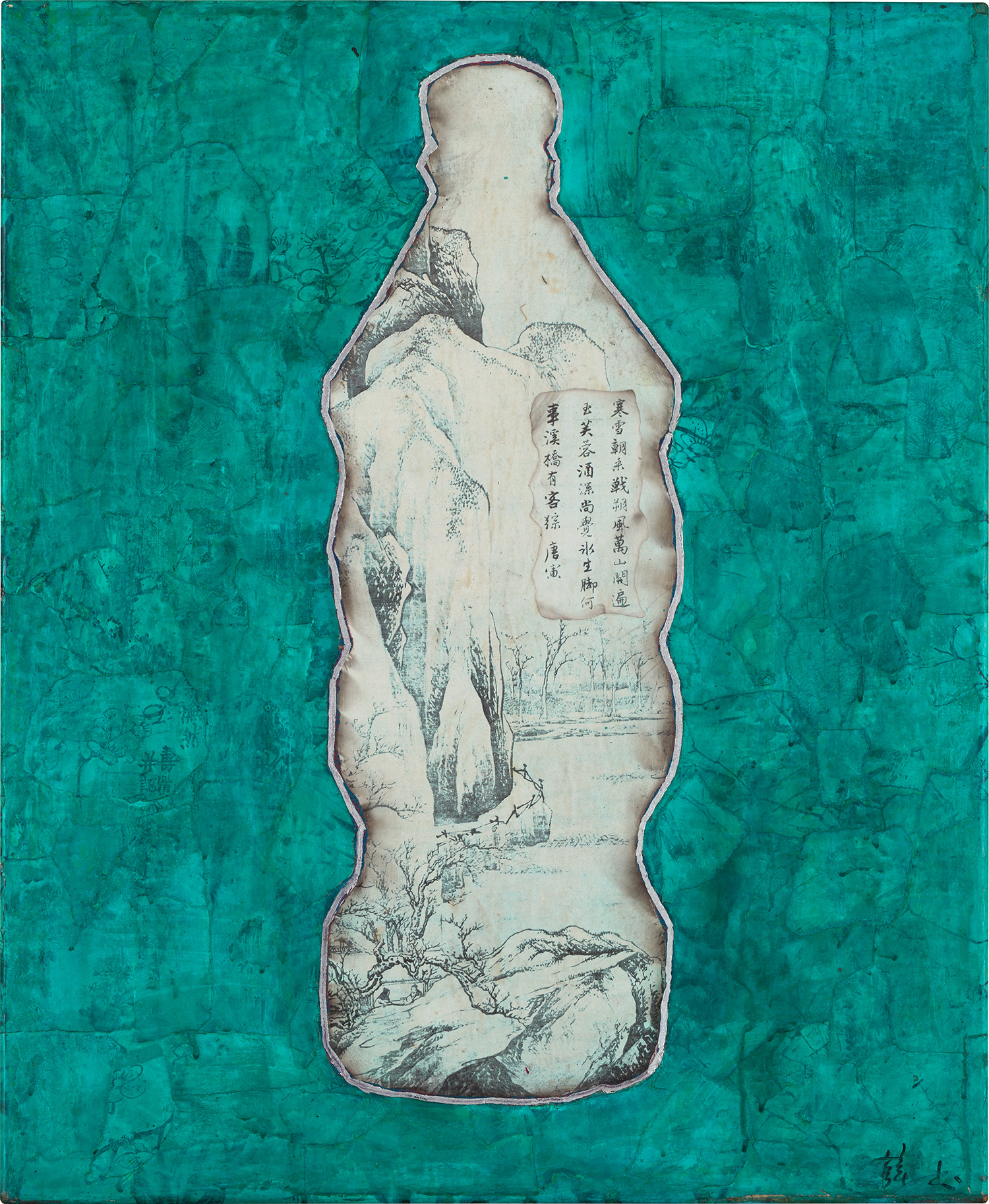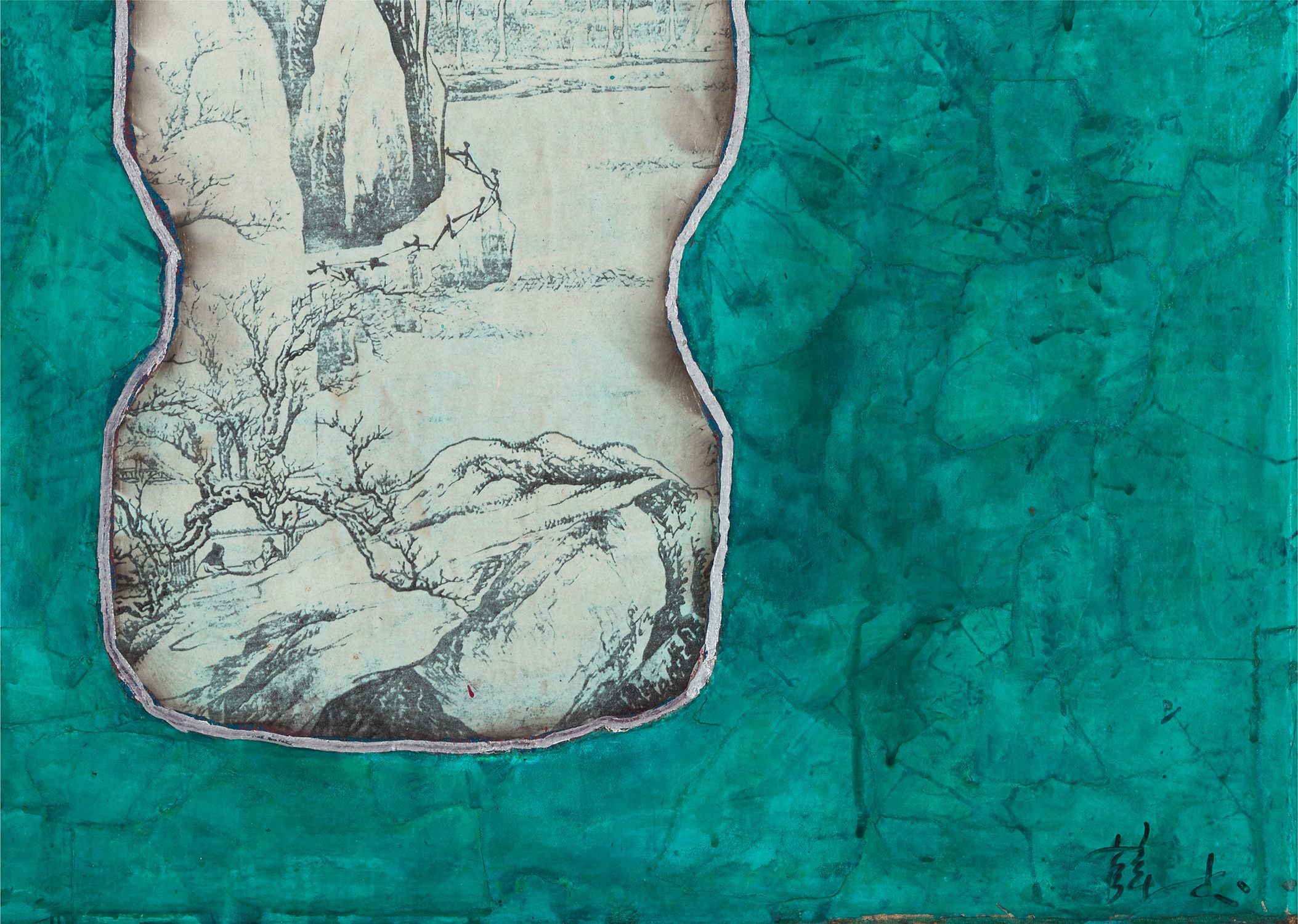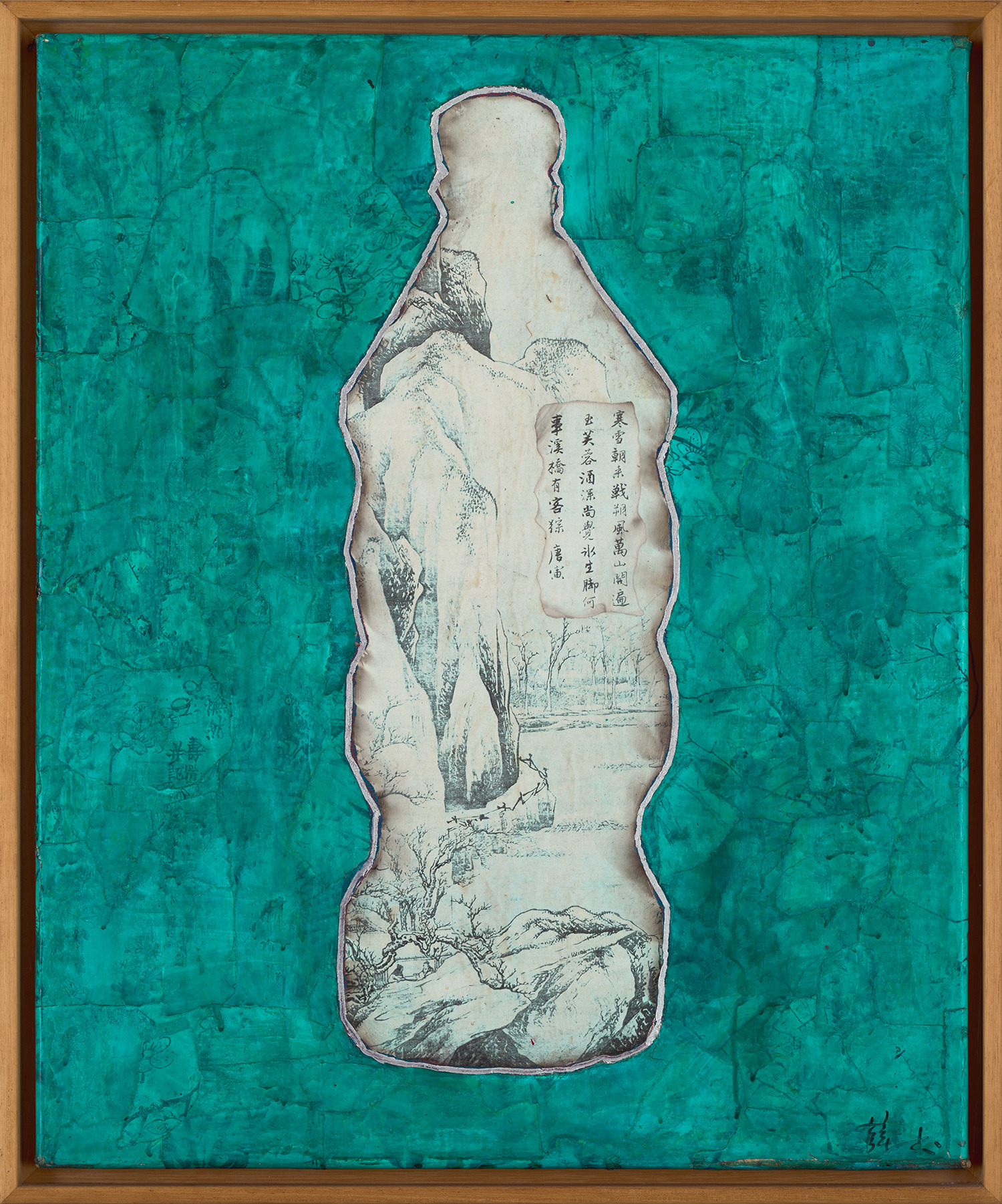







DAW CHINESE CONTEMPORARY ART COLLECTION
48Ж
Xue Song
Coca Cola
signed 'Xue Song [in Chinese]' lower right; further signed, titled and dated '"Coca Cola" Xue Song [in Chinese and English] 2001' on the reverse
acrylic and printed collage on canvas
work 61.5 x 50.5 cm. (24 1/4 x 19 7/8 in.)
frame 65.2 x 54.2 cm. (25 5/8 x 21 3/8 in.)
frame 65.2 x 54.2 cm. (25 5/8 x 21 3/8 in.)
Executed in 2001.